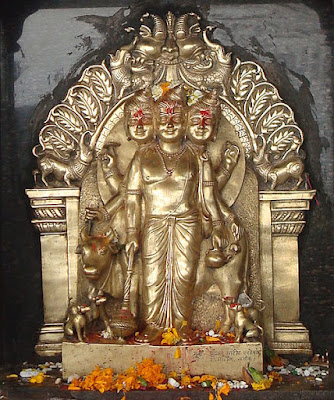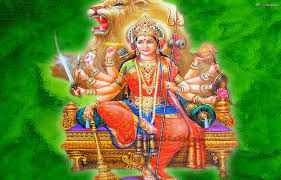SRI KUBERA ASHTHRA SATHA NAMAVALI

(Akshatha or Pushpam to be offered)
1. Om Kuberaya Namah
2. Om Dhanadaya Namah
3. Om Srimate Namah
4. Om Yakshesaya Namah
5. Om Gugyakeswaraya Namah
6. Om Nidhisiya Namah
7. Om Sankara Sakaya Namah
8. Om Mahalakshmi Nivasabhuve Namah
9. Om Maha Padma Nidhisiya Namah
10. Om Poornaya Namah
11. Om Padmanithiswaraya Namah
12. Om Sankaya Nithi Nadha Namah
13. Om Makaragya Nithi Priya Namah
14. Om Sookachhappa Nidhisaya Namah
15. Om Mukunda Nithi Nayakaya Namah
16. Om Kundakyanidhinathya Namah
17. Om Neela Nithyadipaya Namah
18. Om mahathe Namah
19. Om Varanithyadhi Paya Namah
20. Om Poojyaya Namah
21. Om Lakshmi Samrajya Dayakya Namah
22. Om Ilapilapadayaya Namah
23. Om Kosadeesaya Namah
24. Om Kulodisaya Namah
25. Om Ashvarudaya Namah
26. Om Vishvaranthyaya Namah
27. Om Visheshagnaya Namah
28. Om Visharadaya Namah
29. Om Nalakooparanadaya Namah
30. Om Manigreeva Pithre Namah
31. Om Kootamandraya Namah
32. Om Vaishravanaya Namah
33. Om Chitra Laka Manapriyaya Namah
34. Om Eykapinkaya Namah
35. Om Alaka deeyascye Namah
36. Om Boulasathya Namah
37. Om Naravahanya Namah
38. Om Kailasa Saila Nilaya Namah
39. Om Rajya daya Namah
40. Om Ravanakrajaya Namah
41. Om Chithra Chaithra Radaya Namah
42. Om Udhyana Vihara Namah
43. Om Suguthunalaya Namah
44. Om Mahot Sahaya Namah
45. Om Mahapragyaya Namah
46. Om Sadhpushpaka Vahanaya Namah
47. Om Sarvaboumaya Namah
48. Om Anganathya Namah
49. Om Somaya Namah
50. Om Sowmyadikeswaraya Namah
51. Om Punyathmane Namah
52. Om Puruhuthasriyai Namah
53. Om Sarvapunya Janeswaraya Namah
54. Om Nithya Kurthaye Namah
55. Om Needhivetra Namah
56. Om Lankaprakthana Nayakaya Namah
57. Om Yakshaya Namah
58. Om Paramasanthathmana Namah
59. Om Yaksharaje Namah
60. Om Yakshaniviruthaya Namah
61. Om Kinnaresaya Namah
62. Om Kimpurushaya Namah
63. Om Nathaya Namah
64. Om Katkayuthaya Namah
65. Om Vasine Namah
66. Om Esana Dakshaparch Vasthaya Namah
67. Om Vayuvasamasaraja Namah
68. Om Dharmamargainirathya Namah
69. Om Dharmasammuka Samstitiya Namah
70. Om Nitheswaraya Namah
71. Om Dhanakasyaya Namah
72. Om Ashtalakshmi Yastrithalaya Namah
73. Om Manushyadharmaya Namah
74. Om Sathviruthaya Namah
75. Om Koslakshmi Samasrithaya Namah
76. Om Dhanalakshmi Nithyavasaya Namah
77. Om Danyalakshmi Nivasabhuve Namah
78. Om Ashwalakshmi Sadahavasya Namah
79. Om Gaja Lakshmi Striyalaya Namah
80. Om Rajayalakshmi Janmakeyaya Namah
81. Om Dairya Lakshmi Kirupsaraya Namah
82. Om Akandaishwarya Samynkthaya Namah
83. Om Nithya Nandhaya Namah
84. Om Sukasrayaya Namah
85. Om Nithyathrupthaya Namah
86. Om Nirasaya Namah
87. Om Nirupathravaya Namah
88. Om Nityakamaya Namah
89. Om Nirukankshyaya Namah
90. Om Niurpathigavasabhuve Namah
91. Om Shanthya Namah
92. Om Sarvogunobedaya Namah
93. Om Sarvagnaya Namah
94. Om Sarasammadhaya Namah
95. Om Sarvanikarunapathraya Namah
96. Om Sadhanandha Krupalaya Namah
97. Om Gandharvakulasamsevyaya Namah
98. Om Sowgangdikusamapriyaya Namah
99. Om Swrnanagarivasaya Namah
100. Om Nithipeeta Samasrayaya Namah
101. Om Mahamerudhvasthayene Namah
102. Om Dhustyaya Namah
103. Om Surpanakajeshtaya Namah
104. Om Sivapoojarathaya Namah
105. Om Rajayoga Samaukuthya Namah
106. Om Rajasekera Poojakaya Namah
107. Om Raja Rajaya Namah
108. Om Namanidha Parimala Pushpani Samarpayani





















































